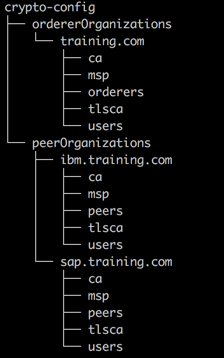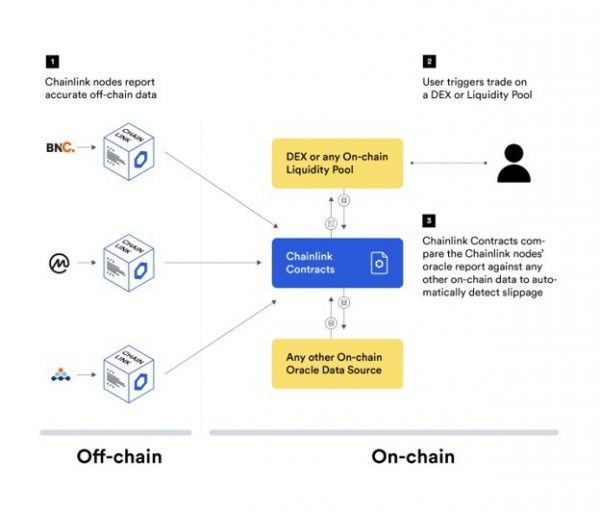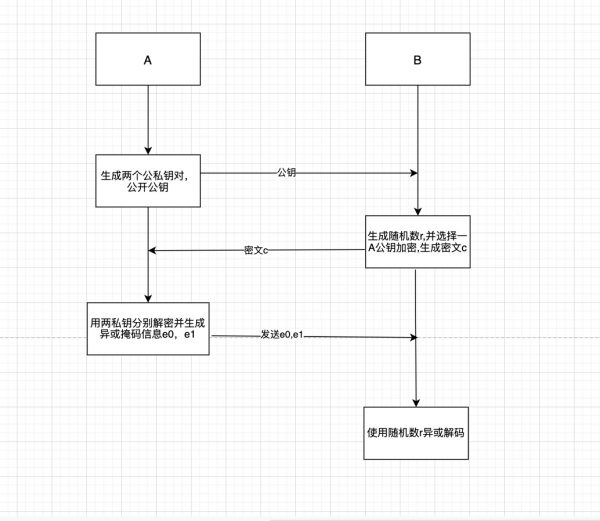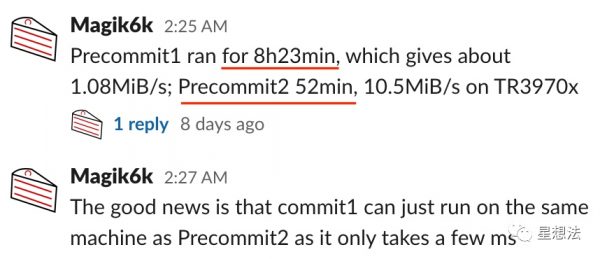EOS源码分析之八区块及数据结构
eos源码分析之八区块及数据结构
做为EOS系列的最后一篇,把区块及相关的数据结构分析一下。虽然在前面的共识中分析过出块这部分,但对EOS的区块结构及一些细节并没有深入进去。
一、区块
EOS的区块设计不同的版本变化很大,这里以4.0的为模板分析,先看一下它的数据结构:
struct block_header
{
block_timestamp_type timestamp;
account_name producer;//帐户标识符 13字节
uint16_t confirmed = 1;
block_id_type previous;//前一块的HASH
checksum256_type transaction_mroot; /// mroot of cycles_summary
checksum256_type action_mroot; /// mroot of all delivered action receipts
uint32_t schedule_version = 0;
optional<producer_schedule_type> new_producers;//新生产者
extensions_type header_extensions;
digest_type digest()const;//摘要哈希
block_id_type id() const; //自己的哈希
uint32_t block_num() const { return num_from_id(previous) + 1; }
static uint32_t num_from_id(const block_id_type& id);//ID是任意数字,区块号是从零长到现在的排序号 ID=HASH+n
};
struct signed_block_header : public block_header
{
signature_type producer_signature;//生产者签名
};
struct signed_block : public signed_block_header {
using signed_block_header::signed_block_header;
signed_block() = default;
signed_block( const signed_block_header& h ):signed_block_header(h){}
vector<transaction_receipt> transactions; /// new or generated transactions交易记录
extensions_type block_extensions;//扩展区
};
using signed_block_ptr = std::shared_ptr<signed_block>;//重定义一个新的数据类型,方便使用这里感觉最大的不同是把原来的交易ID直接弄成了交易内容,这样有点简单粗暴的感觉,但是确实是容易理解一些。区块的生产在前面选举后分析过,这里不再赘述,看一下产生区块中对交易的处理。
二、交易和上链
正如所有的区块链一样,交易最终打包入区块,才是真正的区块成功能,也就是说,区块生产出来的目的不是单纯生产块,而要把交易数据打包进去,然后再保存到数据库,最终上链。
1、交易
transaction_trace_ptr push_transaction( const transaction_metadata_ptr& trx,
fc::time_point deadline,
bool implicit,
uint32_t billed_cpu_time_us )
{
FC_ASSERT(deadline != fc::time_point(), "deadline cannot be uninitialized");
transaction_trace_ptr trace;//交易检索
try {
transaction_context trx_context(self, trx->trx, trx->id); //交易管理控制
trx_context.deadline = deadline;
trx_context.billed_cpu_time_us = billed_cpu_time_us;
trace = trx_context.trace;
try {
if( implicit ) {
trx_context.init_for_implicit_trx();
} else {
trx_context.init_for_input_trx( trx->packed_trx.get_unprunable_size(),
trx->packed_trx.get_prunable_size(),
trx->trx.signatures.size() );
}
//检查权限集合
if( !implicit && pending->_block_status == controller::block_status::incomplete ) {
check_actor_list( trx_context.bill_to_accounts ); // Assumes bill_to_accounts is the set of actors authorizing the transaction
}
//延迟状态
trx_context.delay = fc::seconds(trx->trx.delay_sec);
//检查权限,这个前面分析过
if( !self.skip_auth_check() && !implicit ) {
authorization.check_authorization(
trx->trx.actions,
trx->recover_keys( chain_id ),
{},
trx_context.delay,
[](){}
/*std::bind(&transaction_context::add_cpu_usage_and_check_time, &trx_context,
std::placeholders::_1)*/,
false
);
}
//执行上下文,其实就是执行tx中的action
trx_context.exec();
trx_context.finalize(); // Automatically rounds up network and CPU usage in trace and bills payers if successful
//创建恢复点
auto restore = make_block_restore_point();
if (!implicit) {
transaction_receipt::status_enum s = (trx_context.delay == fc::seconds(0))
? transaction_receipt::executed
: transaction_receipt::delayed;
//交易填充
trace->receipt = push_receipt(trx->packed_trx, s, trx_context.billed_cpu_time_us, trace->net_usage);
pending->_pending_block_state->trxs.emplace_back(trx);
} else {
transaction_receipt_header r;
r.status = transaction_receipt::executed;
r.cpu_usage_us = trx_context.billed_cpu_time_us;
r.net_usage_words = trace->net_usage / 8;
trace->receipt = r;
}
//填充ACTION
fc::move_append(pending->_actions, move(trx_context.executed));
// call the accept signal but only once for this transaction
if (!trx->accepted) {
emit( self.accepted_transaction, trx);
trx->accepted = true;
}
emit(self.applied_transaction, trace);// 发送成功打包交易的消息
trx_context.squash();//不敢肯定,是不是清理回退的数据
restore.cancel();//取消恢复
if (!implicit) {
unapplied_transactions.erase( trx->signed_id );
}
return trace;
} catch (const fc::exception& e) {
trace->except = e;
trace->except_ptr = std::current_exception();
}
if (!failure_is_subjective(*trace->except)) {
unapplied_transactions.erase( trx->signed_id );
}
return trace;
} FC_CAPTURE_AND_RETHROW((trace))
}2、上链
在apply_block中:
void commit_block( bool add_to_fork_db ) {
if( add_to_fork_db ) {
pending->_pending_block_state->validated = true;
auto new_bsp = fork_db.add( pending->_pending_block_state );
emit( self.accepted_block_header, pending->_pending_block_state );
head = fork_db.head();
FC_ASSERT( new_bsp == head, "committed block did not become the new head in fork database" );
}
// ilog((fc::json::to_pretty_string(*pending->_pending_block_state->block)));
emit( self.accepted_block, pending->_pending_block_state );
if( !replaying ) {
reversible_blocks.create<reversible_block_object>( [&]( auto& ubo ) {
ubo.blocknum = pending->_pending_block_state->block_num;
ubo.set_block( pending->_pending_block_state->block );
});
}
pending->push();
pending.reset();//恢复状态,可以再次出块
}通过fork_db的操作把数据库存储起来,然后挂到链上,形成区块链。再广播出去,清除状态,重新准备出块。
三、相关的几个数据结构
有几个数据结构比较重要:multi_index,optional和scoped_exit。
1、访问数据库的multi_index
template<uint64_t TableName, typename T, typename... Indices>
class multi_index
{
private:
static_assert( sizeof...(Indices) <= 16, "multi_index only supports a maximum of 16 secondary indices" );
constexpr static bool validate_table_name( uint64_t n ) {
// Limit table names to 12 characters so that the last character (4 bits) can be used to distinguish between the secondary indices.
return (n & 0x000000000000000FULL) == 0;
}
constexpr static size_t max_stack_buffer_size = 512;
static_assert( validate_table_name(TableName), "multi_index does not support table names with a length greater than 12");
uint64_t _code;
uint64_t _scope;
mutable uint64_t _next_primary_key;
enum next_primary_key_tags : uint64_t {
no_available_primary_key = static_cast<uint64_t>(-2), // Must be the smallest uint64_t value compared to all other tags
unset_next_primary_key = static_cast<uint64_t>(-1)
};
struct item : public T
{
template<typename Constructor>
item( const multi_index* idx, Constructor&& c )
:\__idx(idx){
c(\*this);
}
......
};
struct item_ptr
{
item_ptr(std::unique_ptr<item>&& i, uint64_t pk, int32_t pitr)
: \_item(std::move(i)), \_primary_key(pk), \_primary_itr(pitr) {}
......
};
mutable std::vector<item_ptr> _items_vector;
template<uint64_t IndexName, typename Extractor, uint64_t Number, bool IsConst>
struct index {
public:
typedef Extractor secondary_extractor_type;
typedef typename std::decay<decltype( Extractor()(nullptr) )>::type secondary_key_type;
......
constexpr static uint64_t name() { return index_table_name; }
constexpr static uint64_t number() { return Number; }
struct const_iterator : public std::iterator<std::bidirectional_iterator_tag, const T> {
public:
friend bool operator == ( const const_iterator& a, const const_iterator& b ) {
return a.\_item == b.\_item;
}
friend bool operator != ( const const_iterator& a, const const_iterator& b ) {
return a.\_item != b.\_item;
}
const T& operator*()const { return *static_cast<const T*>(\_item); }
const T* operator->()const { return static_cast<const T*>(\_item); }
......
return *this;
}
const_iterator& operator--() {
using namespace \_multi_index_detail;
......
return \*this;
}
const_iterator():_item(nullptr){}
private:
friend struct index;
const_iterator( const index* idx, const item* i = nullptr )
: _idx(idx), _item(i) {}
const index* _idx;
const item* _item;
}; /// struct multi_index::index::const_iterator
typedef std::reverse_iterator<const_iterator> const_reverse_iterator;
const_iterator cbegin()const {
using namespace \_multi_index_detail;
return lower_bound( secondary_key_traits<secondary_key_type>::lowest() );
}
......
const T& get( secondary_key_type&& secondary, const char* error_msg = "unable to find secondary key" )const {
return get( secondary, error_msg );
}
// Gets the object with the smallest primary key in the case where the secondary key is not unique.
const T& get( const secondary_key_type& secondary, const char* error_msg = "unable to find secondary key" )const {
auto result = find( secondary );
eosio_assert( result != cend(), error_msg );
return *result;
}
const_iterator lower_bound( secondary_key_type&& secondary )const {
return lower_bound( secondary );
}
const_iterator lower_bound( const secondary_key_type& secondary )const {
using namespace \_multi_index_detail;
......
return {this, &mi};
}
const_iterator upper_bound( secondary_key_type&& secondary )const {
return upper_bound( secondary );
}
const_iterator upper_bound( const secondary_key_type& secondary )const {
......
return {this, &mi};
}
const_iterator iterator_to( const T& obj ) {
......
return {this, &objitem};
}
......
static auto extract_secondary_key(const T& obj) { return secondary_extractor_type()(obj); }
private:
friend class multi_index;
index( typename std::conditional<IsConst, const multi_index*, multi_index*>::type midx )
:_multidx(midx){}
typename std::conditional<IsConst, const multi_index*, multi_index*>::type _multidx;
}; /// struct multi_index::index
......
const item* ptr = itm.get();
auto pk = itm->primary_key();
auto pitr = itm->__primary_itr;
_items_vector.emplace_back( std::move(itm), pk, pitr );
return *ptr;
} /// load_object_by_primary_iterator
public:
multi_index( uint64_t code, uint64_t scope )
:_code(code),_scope(scope),_next_primary_key(unset_next_primary_key)
{}
......
_item = &_multidx->load_object_by_primary_iterator( prev_itr );
return *this;
}
private:
const_iterator( const multi_index* mi, const item* i = nullptr )
:_multidx(mi),_item(i){}
const multi_index* _multidx;
const item* _item;
friend class multi_index;
}; /// struct multi_index::const_iterator
typedef std::reverse_iterator<const_iterator> const_reverse_iterator;
const_iterator cbegin()const {
return lower_bound(std::numeric_limits<uint64_t>::lowest());
}
const_iterator begin()const { return cbegin(); }
.......
void erase( const T& obj ) {
using namespace \_multi_index_detail;
......
hana::for_each( \_indices, [&]( auto& idx ) {
typedef typename decltype(+hana::at_c<0>(idx))::type index_type;
auto i = objitem.__iters[index_type::number()];
if( i < 0 ) {
typename index_type::secondary_key_type secondary;
i = secondary_index_db_functions<typename index_type::secondary_key_type>::db_idx_find_primary( \_code, \_scope, index_type::name(), objitem.primary_key(), secondary );
}
if( i >= 0 )
secondary_index_db_functions<typename index_type::secondary_key_type>::db_idx_remove( i );
});
}
};
multi_index这个数据结构同样是仿照BOOST库中的boost::multi_index;估计EOS的开发人员觉得这个太重,自己搞了一个,当然,顺带实现很多自己独立的需求。需要说明的是WIKI上的说明是比较落后的,而且EOS开发团队也声明了,这个容器对象是不断演进的,所以说现在分析的可能已经是落后的了,但可能他们的大原则不会有剧烈的变动。
EOS为每个账户都预留了数据库空间(大小与代币持有量有关),账户可以建立多个数据表。智能合约无法直接操作存储在见证人硬盘中的数据表,需要使用multi_index作为中间工具(或者叫容器),每个multi_index实例都与一个特定账户的特定数据表进行交互(取决于实例化时的参数)。
这个多索引表有几个特点:类似ORM中的映射表,行为独立的对象,列为属性;有主键和非主键,排序时默认为升序,同样主键只能唯一并为uint64_t类型;支持自定函数做为索引,但返回值受限,即只能为支持的键类型;允许多索引排序,但是二级索引不大于16,前面的代码可以看到,同时不支持二级索引的直接构建;类似双向链表可以双向迭代。
它支持主要以下几种操作:
emplace:添加一个对象(row)到表中,返回一个新创建的主键迭代器。在这个过程中创建新对象,序列化写入表中,更新二级索引,付费。如果出现异常则直接抛出。
erase:这个就简单了,直接擦除。可以用迭代器也可以引用对象来删除。删除后返回之后的迭代器,并更新相关索引及费用。
modify:类似于数据库的UPDATE,这个比较麻烦,需要提供更新对象的迭代器,更新对象的引用,帐户(需要付费的)以及更新目标对象的函数(lambada),无返回值,在操作过程中主要是要对payer的属性进行判断,然后进行费用的计算和相关退费,完成后更新索引。
get:由主键查找对象,返回对象的引用,如果没找到,抛出异常。
find:根据主键查找已存在的对象。它的返回值是一个迭代器。如果没有查到返回一个end迭代器。
迭代器有点类似于STD标准库的迭代器,可以前后遍历,这里不再赘述。
2、类boost::optional的自定义容器
/**
* @brief provides stack-based nullable value similar to boost::optional
*
* Simply including boost::optional adds 35,000 lines to each object file, using
* fc::optional adds less than 400.
*/
template<typename T>
class optional
{
public:
typedef T value_type;
typedef typename std::aligned_storage<sizeof(T), alignof(T)>::type storage_type;
optional():\_valid(false){}
~optional(){ reset(); }
optional( optional& o )
:_valid(false)
{
if( o._valid ) new (ptr()) T( *o );
\_valid = o._valid;
}
......
template<typename U>
optional( const optional<U>& o )
:_valid(false)
{
if( o._valid ) new (ptr()) T( *o );
\_valid = o._valid;
}
template<typename U>
optional( optional<U>& o )
:_valid(false)
{
if( o._valid )
{
new (ptr()) T( *o );
}
\_valid = o._valid;
}
template<typename U>
optional( optional<U>&& o )
:_valid(false)
{
if( o._valid ) new (ptr()) T( fc::move(*o) );
\_valid = o._valid;
o.reset();
}
......
optional& operator=( optional&& o )
{
if (this != &o)
{
if( \_valid && o._valid )
{
ref() = fc::move(*o);
o.reset();
} else if ( !\_valid && o._valid ) {
\*this = fc::move(*o);
} else if (\_valid) {
reset();
}
}
return \*this;
}
friend bool operator < ( const optional a, optional b )
{
if( a.valid() && b.valid() ) return \*a < \*b;
return a.valid() < b.valid();
}
......
void reset()
{
if( \_valid )
{
ref().~T(); // cal destructor
}
\_valid = false;
}
private:
template<typename U> friend class optional;
T& ref() { return \*ptr(); }
const T& ref()const { return *ptr(); }
T* ptr() { return reinterpret_cast<T*>(&\_value); }
const T* ptr()const { return reinterpret_cast<const T\*>(&\_value); }
bool _valid;
storage_type _value;
};这个其实不能称做一个容器,因为它一般只盛放一个数据结构,它的主要目的标题也很清楚,其实是老大们不愿意使用BOOST的相关代码,太多了,这个才几百行,小巧实用。
这个模板类的主要作用是封装一些数据结构,防止未初始化或者无意义的数据表达不清楚。比如一些返回值是NULL,有EOF,还有一些是string::npos等等,封装起来就是为了起一个标准的作用,其实你看这个类内部,并没有太多的真正意义的自己操作的数据,大多还是原生数据结构的使用。
3、范围控制的scoped_exit
template<typename Callback>
class scoped_exit {
public:
template<typename C>
scoped_exit( C&& c ):callback( std::forward<C>(c) ){}
scoped_exit( scoped_exit&& mv )
:callback( std::move( mv.callback ) ),canceled(mv.canceled)
{
mv.canceled = true;
}
scoped_exit( const scoped_exit& ) = delete;
scoped_exit& operator=( const scoped_exit& ) = delete;
~scoped_exit() {
if (!canceled)
try { callback(); } catch( ... ) {}
}
scoped_exit& operator = ( scoped_exit&& mv ) {
if( this != &mv ) {
~scoped_exit();
callback = std::move(mv.callback);
canceled = mv.canceled;
mv.canceled = true;
}
return \*this;
}
void cancel() { canceled = true; }
private:
Callback callback;
bool canceled = false;
};
template<typename Callback>
scoped_exit<Callback> make_scoped_exit( Callback&& c ) {
return scoped_exit<Callback>( std::forward<Callback>(c) );
}这个类其实也得很有趣,如果对RAII比较了解的话,这个其实有一点变相的意思,在离开某个范围时,调用这个数据结构的析构函数,然后调用指定的回调函数来处理一些相关的事情,比如清理一些内存等等。
这里的模板构造函数用到了std::forward (c)完美转发,将左右值的匹配自动完成。一些小细节处理的相当不错。
其实EOS中的数据结构和编程方式还是有些复杂的,特别是其中一些使用了比较传统的宏模板自动创建的方法(在MFC中常见,但广受诟病),所以一些代码还是比较晦涩的,不建议也这样使用。
转载自:https://github.com/XChainLab/documentation/edit/master/eos/eos%E6%BA%90%E7%A0%81%E5%88%86%E6%9E%90%E4%B9%8B%E5%85%AB%E5%8C%BA%E5%9D%97%E5%8F%8A%E6%95%B0%E6%8D%AE%E7%BB%93%E6%9E%84.md
版权属于:Surou
本文链接:https://www.bcskill.com/index.php/archives/630.html
相关技术文章仅限于相关区块链底层技术研究,禁止用于非法用途,后果自负!本站严格遵守一切相关法律政策!










评论